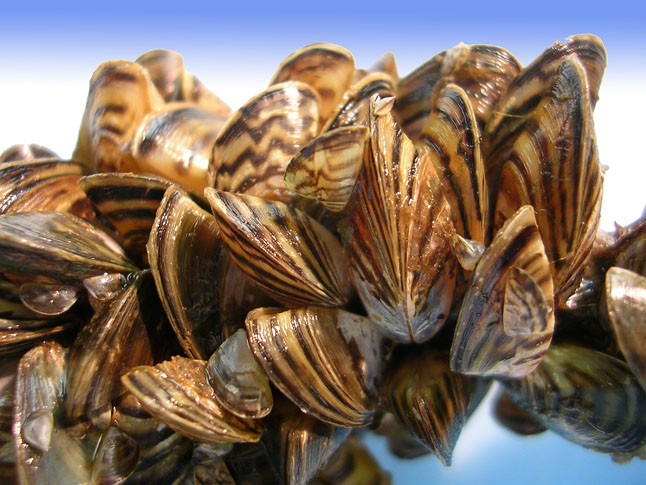
Four invasive species committees and the Columbia Basin Trust have come together are developing a joint cohesive strategy to address the threat aquatic invasive species pose to the Columbia Basin.
This month, representatives of the Central Kootenay Invasive Plant Committee (CKIPC), East Kootenay Invasive Plant Council (EKIPC), Columbia Shuswap Invasive Species Society (CSISS) and North West Invasive Plant Council (NWIPC), along with 20 other participants, met to discuss ways to address and prevent the entry of aquatic invasives into the Basin. Participants also represented provincial and local government, hydro-electric power, First Nations fisheries, non-profit societies, stewardship groups and compliance and enforcement officers.
“Aquatic invasive species such as zebra and quagga mussels can be extremely damaging to our ecosystems and economy,” Crystal Klym, executive director of CKIPC, said in a statement about the results of the meeting. “Once they arrive here they are extremely difficult to get rid of so developing strategies to prevent them is key.”
Zebra and quagga mussels have infested waterways as close as Manitoba and Colorado. Boats traveling from these waters into the Columbia Basin can transport these mussels and introduce them into local waterways – something that many partners are trying to prevent.
“Residents identified invasive species as one of the priorities to address in our strategic planning sessions last year,” Tim Hicks, the CBT’s manager of Water and Environment, said in the statement. “We are really excited about the collaborative efforts of the local invasive species councils. We’re adding our support to help enhance and expand these efforts to implement a strategy that will reduce and prevent the spread of invasive species in the Basin.”
Invasive mussels are not the only aquatic invasive threat; there are many other species that can impact our waterways, Klym said.
“Invasive plant species like yellow flag-iris and flowering rush can escape from garden ponds and enter our rivers, lakes and wetlands, choking out native species and impacting wildlife habitat,” she said.
The group formed a steering committee to guide the development of the strategy and implementation plan that is expected to be completed by spring of 2015.
To find out more about aquatic invasive species contact your local invasive plant committee. In Revelstoke, Golden, Salmon Arm and other Columbia Shuswap Regional District communities that is www.csiss.org or visit www.ckipc.ca.
For more information about Columbia Basin Trust and its environment focus visit cbt.org/environment.



